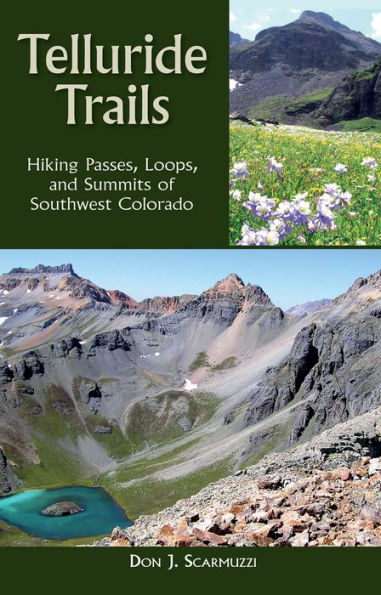Read an Excerpt
Preface Four distinct waterfalls are visible or nearly visible from the town of Telluride, Colorado, and many more can be found near the high basins and peaks surrounding this spectacular region of the Rocky Mountains. Dozens of the 110 hikes presented in this guide begin right from downtown Telluride, while others branch out from the mountain roads nearby, and some are located closer to Durango, Silverton, Ouray, Ridgway, Montrose, Ophir, Rico, Dolores, and Cortez. Each hike begins with essential information such as elevation, distance, duration, and difficulty level. Elevation information includes not only the highest point (or points) of a hike but also the maximum vertical gains you will experience along the trail. Difficulty levels range from “easiest” (no elevation change) to “moderate” (short hike, easy grades), “strenuous” (typical to moderate hike, hills), “very challenging” (longer hike, steeper, with varying mountain conditions), and “expert only” (very steep, often with exposed ridge walking and loose scree, requiring climbing-type moves). Most of the hikes fall somewhere in the middle, and all hikes but those rated “very challenging” or “expert-only” will be achievable for most people. Climbing ropes, pitons, or anchor bolts are not mandatory to complete any of the hikes listed here, though that may not be the case for everyone—see difficulty levels for each hike for recommendations. You certainly won’t hear me use terms like underclings, stemming, laybacks, jams, or evangelical hammerlocks! More than half of these trails can be hiked as a loop, and I provide alternate routes (Alt) and optional paths (Opt) wherever possible. The routes described for each hike may be well-worn trails, complete bushwhacks and scrambles, or anything in between. There is something here for practically everyone, whether you would rather simply cut to the chase, as it were, and get on with something more challenging, or prefer a more leisurely stroll through the aspens, evergreens, and basins without going to a summit or having to use any climbing-type moves. You’ll find detailed instructions to locating seventy-five peaks and other high points, including many mountain passes and vistas. I try to keep hiking lingo simple. “Trailhead” is abbreviated as “TH.” A switchback is a spot in a trail that zigzags sharply, whether once or fifty times. A shoulder is a rise or small ridge. Exposure refers to the level of risk of falling where a fall would be fatal. A trail section described as “airy” is exposed to some degree, with drop-offs. Exercise extreme caution in such areas. Aspen line is around 11,800 feet, and tree line is around 12,200 feet in this region. I usually find that the first 20 to 30 minutes of practically any hike can be the toughest until I get into a groove with my breathing and walking. High altitude affects everybody differently, so if you feel dehydrated, headachy, or nauseous, move to a lower altitude. (Some people might even experience altitude sickness while still in Telluride, at 8745 feet.) Mountain hazards (rapidly changing weather, rock slides) and the unexpected almost always come into play, so don’t count on apps from your phone to save you in the wilderness! With so much wildlife around, don’t forget to watch out for the blood burglars, including ticks and to a lesser degree mosquitoes. Luckily you probably will not run across the tiny deer ticks that cause Lyme disease, but a larger species, the Rocky Mountain wood tick, is plentiful from spring through June and should be avoided. These ticks thrive in low grass and brush in the high country—a tick check, or self-examination, during and after spring hikes is a good idea. If a tick has latched on or is slightly embedded in your skin, pull it straight out with tweezers or hold a lighter flame close until it falls away. However, tick warning aside, you would be worse off if you forgot your sunscreen or enough water on a warm bluebird day. All right, enough talk. It’s go time! You can hike the mountains in Southwest Colorado year-round if you know what you are doing and have the proper gear, but the ideal time to hike or mountain bike is late June through mid-October. All you need is a nice pair of hiking shoes, a backpack with plenty of supplies, water, phone, camera, GPS, MP3 player, pedometer, more electric junk you never used to need but now can’t get by without—and the day to unfold before your very eyes, just one foot in front of the other.



